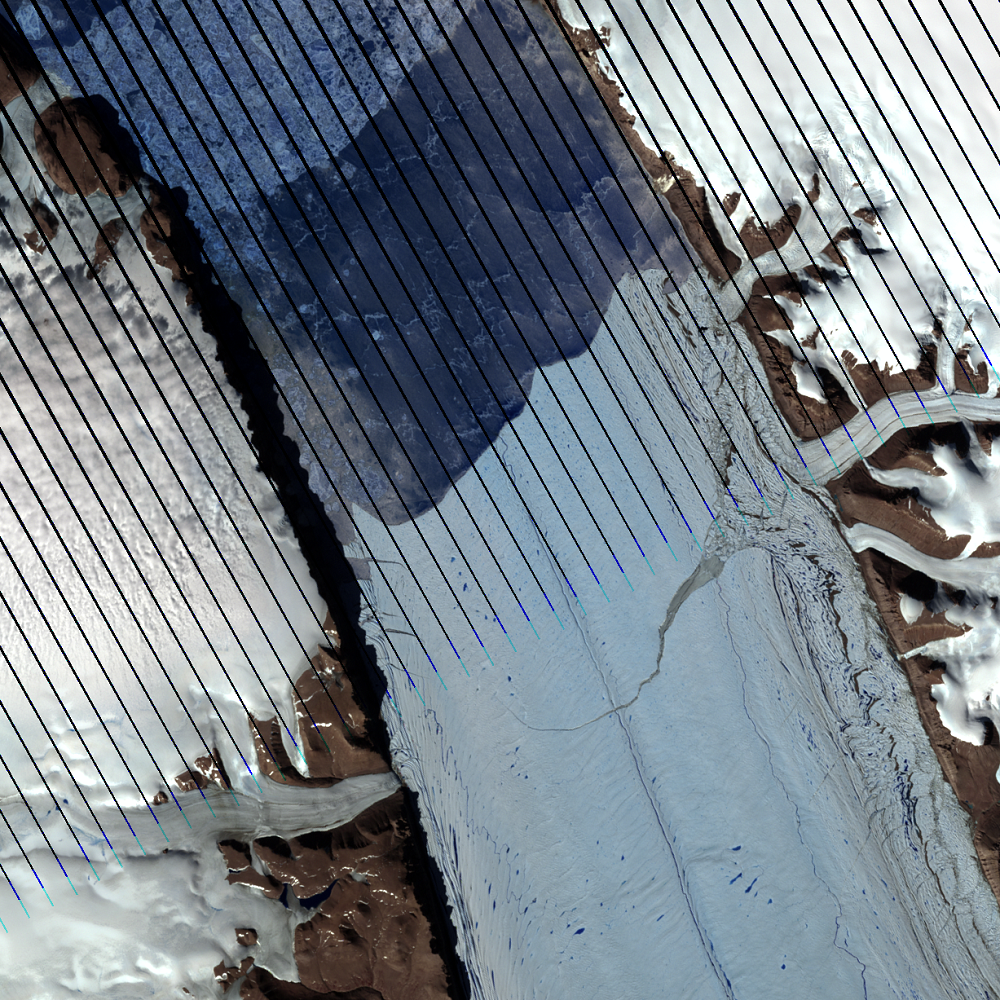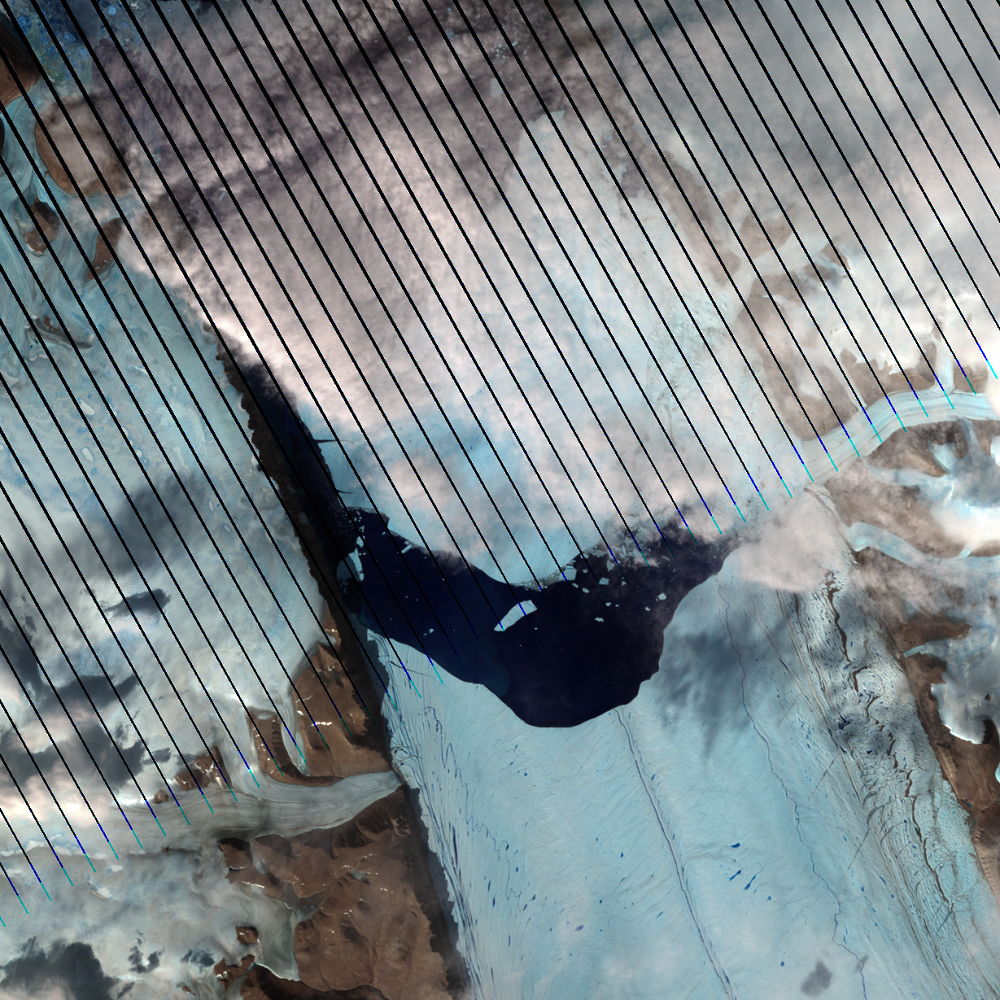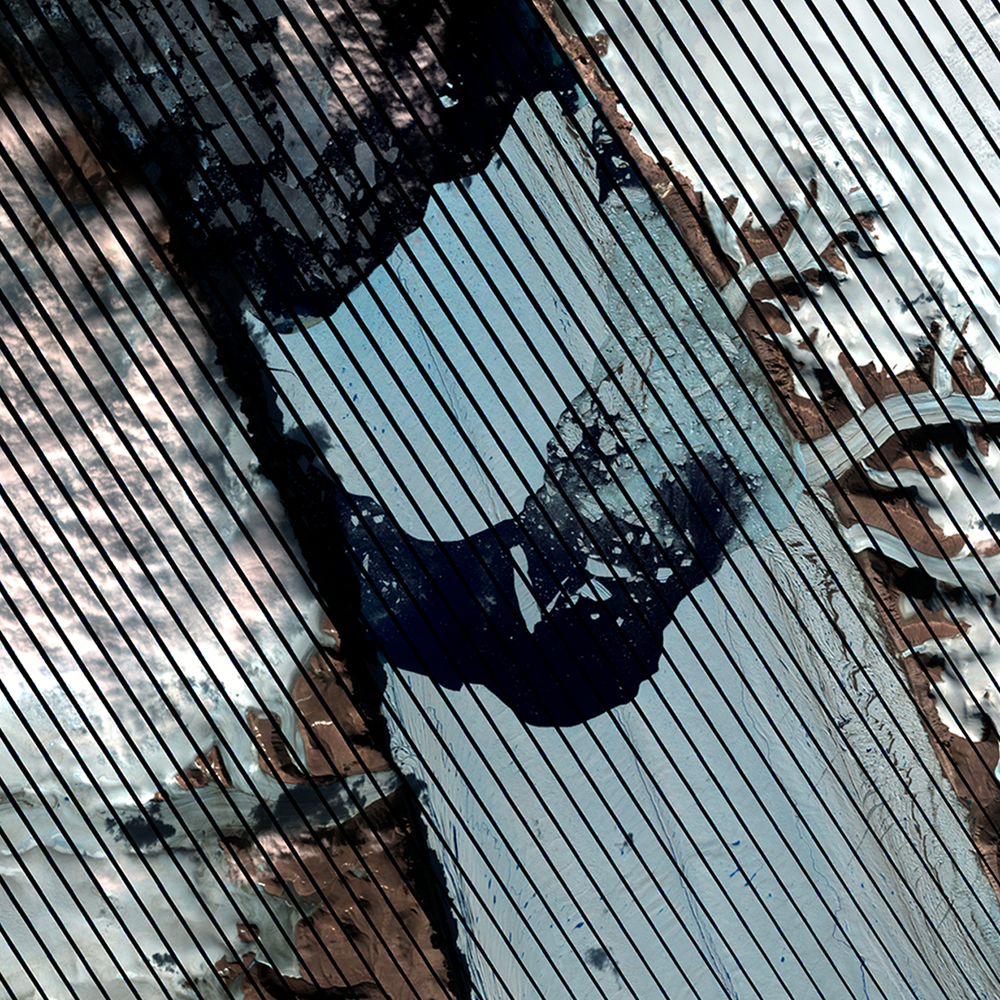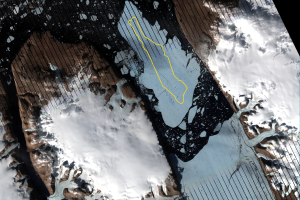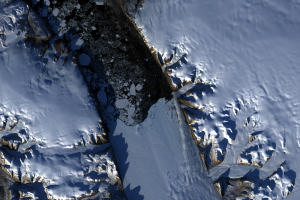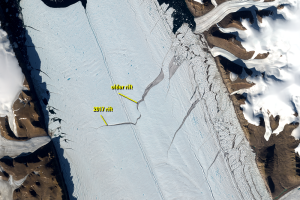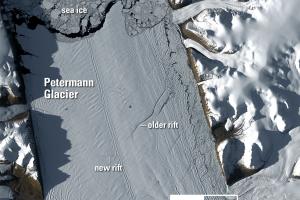
2012 Break
Earth Resources Observation and Science (EROS) Center - Earthshots
Just two years later, another large iceberg broke off Petermann Glacier. This one was estimated at 130 square kilometers—about half the size of the 2010 iceberg. But this calving broke off the glacier tongue farther upstream and moved the front end of the glacier farther inland than has been observed since 1876, the first reported measurements of the glacier.
The floating ends of glaciers like Petermann are known as ice shelves. They act as doorstops. When these ice shelves suddenly splinter and weaken, the glaciers that feed them speed up. The result is more ice flowing into the ocean, which could raise global sea levels.
The development of these icebergs is a natural process; however, when there are two major breaks in two years, scientists must take notice. Even large breaks do not amount to a collapse of the floating extension; nevertheless, they are important events.
(Black stripes run through the images because of the Scan Line Corrector failure on Landsat 7 in May 2003.)

